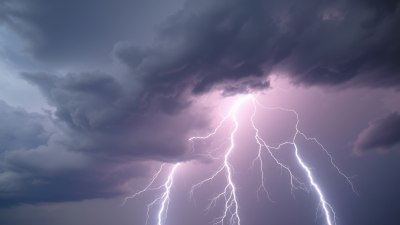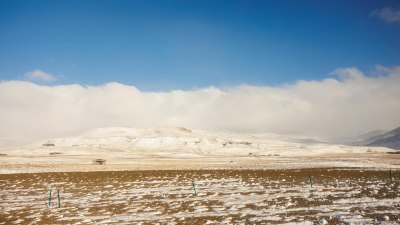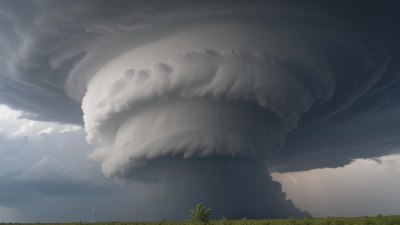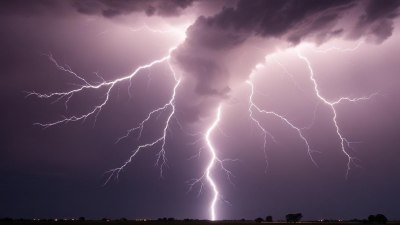The Lifecycle of a Thunderstorm Explained Simply
Explore the stages of a thunderstorm's lifecycle in simple terms, from formation to dissipation.

Image created with Flux Schnell
Thunderstorms are fascinating meteorological phenomena that can be both awe-inspiring and dangerous. Understanding how a thunderstorm develops and eventually dissipates helps us appreciate the power of nature and stay prepared during severe weather. This article breaks down the lifecycle of a thunderstorm into simple stages to explain what happens from start to finish.
What Is a Thunderstorm?
A thunderstorm, sometimes called an electrical storm, is a weather event characterized by the presence of lightning and thunder. These storms often bring heavy rain, strong winds, hail, and sometimes even tornadoes. They form when warm, moist air rises and cools in the atmosphere, creating the right conditions for thunderclouds to develop.
Stage One: The Development Stage
The lifecycle of a thunderstorm begins with the development stage, also called the cumulus stage. During this time, the sun heats up the Earth's surface, causing warm, moist air near the ground to rise through a process known as convection. As this air ascends, it cools, and the water vapor condenses into tiny water droplets, forming a cumulus cloud.
These cumulus clouds continue to grow vertically due to the strong updrafts of warm air fueling the cloud's growth. The cloud grows taller and more dense as condensation releases latent heat, adding energy to the system. The cloud can reach heights of up to 12 kilometers (7 miles) as it expands upward into the troposphere.
At this stage, the thunderstorm doesn’t yet produce rain or lightning. The key features are the visible growth of the cloud and the continued rising motion of moist air. Updrafts in this phase are crucial because they help build the thunderstorm’s structure.
Stage Two: The Mature Stage
The mature stage marks the peak intensity of the thunderstorm. In this phase, the cloud has developed into a cumulonimbus formation, which is a towering thundercloud capable of producing severe weather. The cloud becomes dark and heavy as water droplets and ice particles accumulate within it.
At this point, the storm begins to produce lightning, thunder, heavy rain, hail, and strong, gusty winds. What causes this intense activity? Inside the cloud, strong updrafts carry water droplets upwards where temperatures are below freezing. These droplets turn into ice particles that collide and produce electrical charges. The separation of these charges leads to the buildup of static electricity within the cloud, ultimately causing lightning discharges.
At the same time, precipitation starts to form as the water droplets and ice particles grow heavier. Gravity pulls the heavier particles downward, creating downdrafts—streams of air moving towards the ground. These downdrafts bring rain, hail, and gusty winds to the surface.
The mature stage is the most active and hazardous part of the storm. Thunder and lightning can be dangerous, and the rainfall can be intense enough to cause flash flooding. Hail may damage crops, vehicles, and buildings, while strong winds can uproot trees or cause power outages.
Stage Three: The Dissipating Stage
The final phase in the lifecycle of a thunderstorm is the dissipating stage. This occurs when the downdrafts, or cooler sinking air within the cloud, dominate the cloud's internal circulation. As the downdrafts spread, they cut off the supply of warm, moist air that feeds the storm.
Without the influx of warm air, the storm loses its energy source and begins to weaken. The cloud starts to break apart and the precipitation decreases. Lightning activity diminishes, and the heavy rain tapers off to lighter showers or stops entirely.
The dissipating stage can last from a few minutes up to an hour, depending on the storm's size and atmospheric conditions. Eventually, the cumulonimbus cloud dissipates into smaller cloud fragments and disappears.
Factors That Influence Thunderstorm Formation and Lifecycle
Several factors affect how thunderstorms form and progress through their lifecycle. These include:
- Moisture: High humidity near the surface provides the water vapor needed for cloud and rain formation.
- Instability: Atmospheric instability allows warm air to continue rising and cool in a way that forms clouds. When the air temperature decreases rapidly with height, it encourages convection.
- Lift: Some mechanism must force warm air to rise, such as surface heating, mountain ranges, or fronts where different air masses meet.
- Wind Shear: Changes in wind speed or direction with height can organize thunderstorms into longer-lasting systems or produce severe weather like tornadoes.
How Lightning and Thunder Are Produced
Lightning is a spectacular electrical discharge that occurs inside a thunderstorm. Inside the cloud, small ice crystals and larger hailstones collide. These collisions cause the separation of electrical charges—positive charges gather near the top of the cloud, while negative charges concentrate near the bottom.
This charge separation creates a strong electric field. When the electric field becomes too strong, a spark of electricity jumps between oppositely charged areas. This visible spark is lightning.
The tremendous energy released heats up the air rapidly, causing it to expand and create a shockwave. This shockwave is what we hear as thunder. Because light travels faster than sound, we usually see lightning before we hear thunder.
Types of Thunderstorms
Thunderstorms vary in size and severity, and meteorologists classify them into several types, including:
- Single-cell thunderstorms: These are small, short-lived storms that last about 20 to 30 minutes. They go through all three stages but typically don’t produce severe weather.
- Multi-cell thunderstorms: These contain multiple smaller cells in different stages of development simultaneously. This can result in longer-lasting storms with moderate rainfall and wind.
- Supercell thunderstorms: These are large, powerful, and rotating storms that can produce severe weather such as large hail, tornadoes, and damaging winds.
Where and When Thunderstorms Are Most Common
Thunderstorms occur worldwide but are most common in regions where warm, moist air meets unstable atmospheric conditions. Tropical and subtropical areas often experience frequent thunderstorms due to the high humidity and surface heating.
In the United States, the southeastern states and the central plains—often called Tornado Alley—see the most thunderstorm activity during spring and summer. Thunderstorms are less common in polar regions and very dry desert areas.
How Thunderstorms Affect the Environment
Thunderstorms play an important role in the Earth's atmosphere by redistributing heat and moisture. They help to cool the surface by producing rain and can transport heat from the surface upwards. Thunderstorms also contribute to the natural nitrogen cycle when lightning breaks nitrogen molecules in the air, allowing nitrogen compounds to enter the soil and support plant growth.
However, thunderstorms can also be hazardous. Flash floods caused by heavy rain can put lives at risk. Lightning strikes are a safety hazard outdoors. Strong winds and hail can cause property damage, crop loss, and personal injury.
Safety Tips During Thunderstorms
Because thunderstorms can be dangerous, it's important to follow safety tips when one is nearby:
- Stay indoors and avoid using electrical appliances.
- Stay away from tall objects and open fields if caught outside.
- Avoid water activities during storms since water is an excellent conductor of electricity.
- If driving, safely pull over and avoid flooded roads.
- Listen to weather updates and warnings issued by local authorities.
Scientific Tools to Study Thunderstorms
Meteorologists use various tools to observe and predict thunderstorms. Weather radar helps detect precipitation and storm development in real-time, allowing for warnings to be issued. Weather satellites provide images of cloud cover and storm systems from space. Weather balloons measure temperature, humidity, and wind in the upper atmosphere. Computer models simulate storm formation and evolution to forecast their behavior.
The lifecycle of a thunderstorm can be divided into three main stages: the development stage where warm, moist air rises and forms cumulus clouds; the mature stage where the storm produces lightning, thunder, heavy rain, and sometimes severe weather; and the dissipating stage when the storm loses energy and fades away. Understanding these stages helps us appreciate how powerful and complex thunderstorms are, while recognizing the importance of being prepared to stay safe during these natural events.











